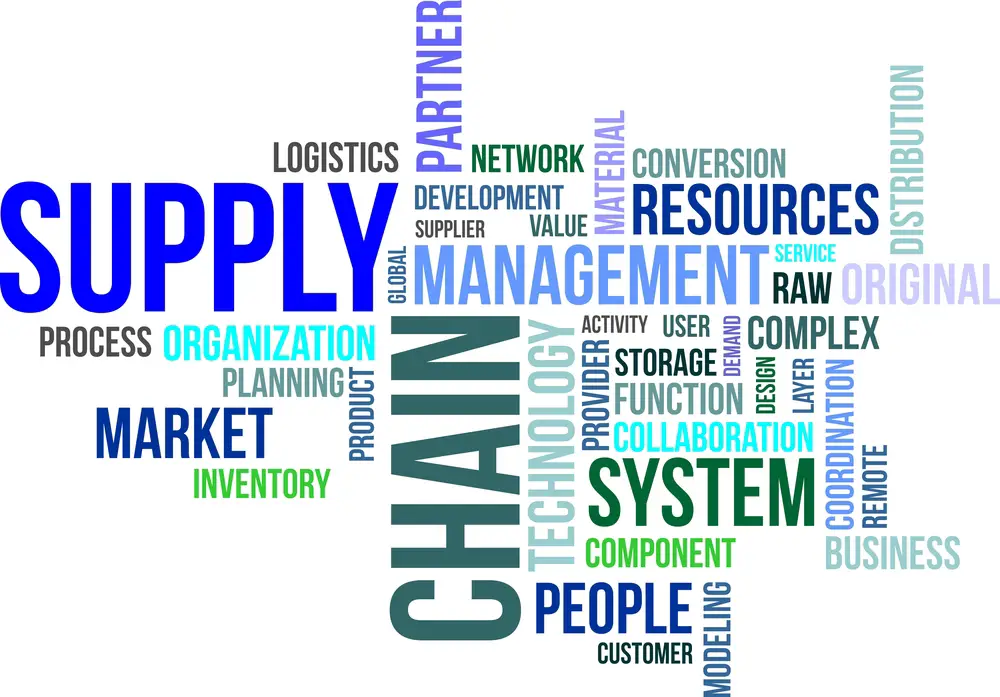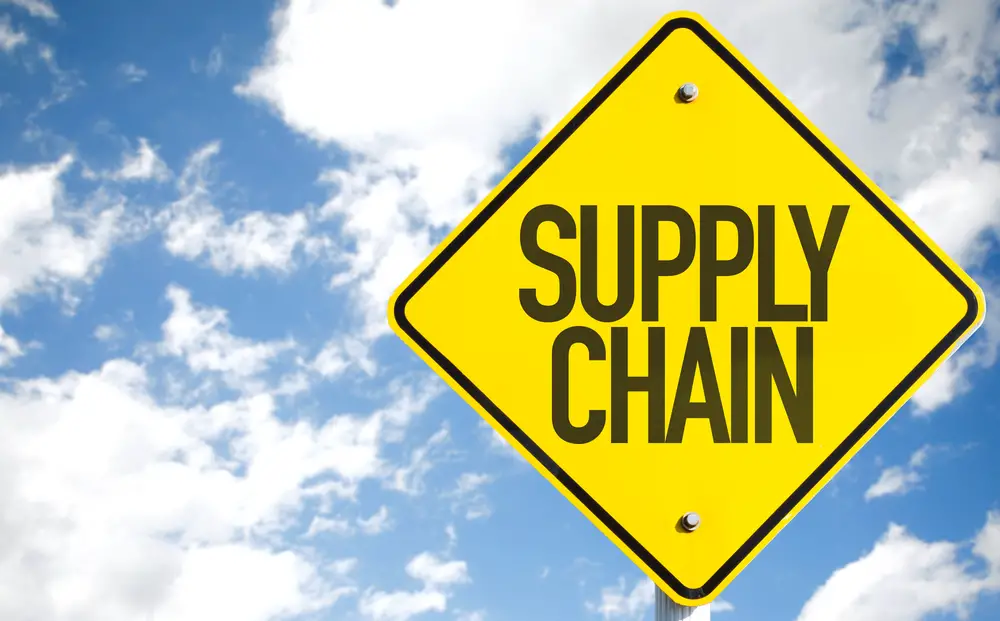Supply Chain Risk Management is an essential component of any business, and Scenario Planning is a key element in helping businesses identify, assess, and respond to risks. Using scenario planning and thinking ahead, organizations can develop strategies and contingency plans to help mitigate potential risks during supply chain planning.
Through careful analysis and review of likely scenarios, companies can be better prepared for disruptions in their supply chain and grow a resilient supply chain.
Scenario planning is an essential part of Supply Chain Risk Management. It’s important to consider the full range of potential risks that could affect your business, including supply chain disruptions, cyber security threats, natural disasters, pandemics, and more. After analyzing each risk factor, create plans for handling each potential situation.
Include details such as response times, communication strategies, decision-making protocols, and contingency plans if one strategy fails. Additionally, run regular simulations on these scenarios to ensure all parties are prepared for any outcome.
Lastly, communicate the plan throughout the organization, so everyone is aware of potentially disruptive events and their roles in addressing them. A prepared Incident Response Plan will enable your organization to protect its assets while minimizing financial losses associated with any supply chain disruption.
Scenario planning is a practice that helps businesses prepare for the future in global supply chains. In supply chain risk management, scenario planning allows organizations to anticipate and prepare for possible risks arising from changes or disruptions in their supply chain.
What Is Scenario Planning?
Scenario planning is a process that helps organizations better understand the potential impacts of different decisions and strategies—especially those relating to supply chain risk management. Scenario planning in supply chain risk management is part of operations management
This type of planning aims to identify which strategies are more likely to succeed and which are more likely to fail under certain circumstances. To do this, companies create models or simulations based on data and expert opinions about future risks and trends. These models help them evaluate potential outcomes to make informed decisions about their supply chains.
How Does It Work?
Scenario planning involves creating models or simulations based on data collected from past events, current conditions, and possible future scenarios. This data is then used to determine the most likely outcome of various strategies or decisions related to supply chain risk management.
Companies use these models as a guide when deciding how best to manage their supply chains to reduce risk and increase efficiency.
The Benefits of Scenario Planning process
Scenario planning helps companies anticipate potential risks before they become problems, allowing them to be proactive rather than reactive when it comes to managing their supply chains.
Additionally, this type of planning helps organizations stay ahead of industry trends by anticipating potential disruptions before they occur. This enables them to adjust their strategies accordingly to remain competitive in an ever-changing market.
Finally, scenario planning allows companies to plan for multiple scenarios simultaneously so that no matter what happens, they will have solutions ready for any situation that may arise.
There are many benefits to scenario planning, including the following:
-Helping you anticipate possible future events and trends.
-Allowing you to test different scenarios to see how they might play out.
-Helping you make better decisions by providing a range of potential outcomes.
-Enabling you to plan for disruptions and unexpected changes.
-Providing a framework for exploring the consequences of your decisions.
-Helping you prepare for crises and emergencies.

What is Supply Chain Risk Management (SCRM)?
Supply chain risk management, or SCRM, represents your entire risk strategy. You will learn how to handle everyday risks and rare events within a supply chain that may negatively affect your business.
Moreover, if done correctly, it may help you gain a competitive advantage within your company. A continuous risk assessment for the supply chain is essential to reduce vulnerabilities. SCRM provides an important basis for business survival supply chain, the more challenging SCRM becomes.
Main supply chain risks
Each supplier chain is faced with risks that are known or are not known. Often this risk to your Supply Chain will come from external influences. Often, the risk is found in the supply chain. When defining the risks of SCRM in your strategy, you must learn to differentiate the risks from the more general uncertainty.
Usually, known risks to risk management have the potential to be identified by quantifying management and sometimes completely eliminated by a person or company. Unknown hazards are difficult to forecast, but they’re generally known and might affect supply planning.
Who needs a Supply Chain Risk Management Plan?
Manufacturer companies can’t just worry about their supply chain as they move materials around. In reality, cloud-based business relies on outside providers who supply products, services, information, or infrastructure.
Mitigating supply chain risk crosses many company compliance issues. This includes businesses that have industry standards. The world’s supply chains can also include contracts and standards from other organizations, and you may need to consider these in your SCRM plan. General compliance topics should also be taken into consideration.
When Supply Chain Risk Policies Fail
It takes just a few suppliers to take your enterprise out of business. While SCRM can be daunting, ignoring the full plan can result in even more painful problems. You can easily face everything – from fires and bankruptcies to hacking attacks and other catastrophes – entirely unavoidable for you.
These things affect business continuity, business profitability, or reputation. Depending on the nature of your problems, internal scrutiny of your risk management plan may occur first.
When should SCRM policies be evaluated?
Many times it may be necessary to assess and reassess your risk management plan. Most organizations assess supply chains annually or less. Sadly, most others assess only sporadic or even entirely.
In a rapidly evolving world, annual assessments can provide some of the best thresholds to assess a supplier’s supply chain. However, these events may cause you a need for an assessment, and you should also use automation to gather risks continuously.

Overview: Supply Chain Risk Management Plans
Supply chains can become hazard prone if you fail to manage your supply chain and financial performance. Your business must establish an effective strategy to deal with supply chain risks. Your plan may have different elements, but they all represent the elements that constitute optimum supply chain risks management plans.
Building scenarios
it is important to identify and analyze the potential risks that could affect your business. This can include supply chain disruptions, cyber security threats, natural disasters, pandemics, and more. After evaluating each risk factor, you can create plans for how your business would handle each situation.
This includes response times, communication strategies, decision-making protocols, and contingency plans if one strategy fails. Additionally, simulations should be conducted regularly to ensure everyone is prepared for any outcome.
Finally, it’s important to communicate the plan throughout the organization, so everyone knows their roles in addressing potentially disruptive events.
The scenario plan typically has three stages. It is the first step in considering the environment and the commercial situation. Next, identify risks associated with the supply chain in the current environment.
Afterward, results are utilized to determine scenario development and evaluation. We should now begin thinking about how we can minimize the consequences of recent events. This involves the evaluation of risks and opportunities, as well as a thorough examination of key KPIs and short-term goals (eg. shorter lead time).
There are three key types of scenarios in supply chain risk management:
1. Internal disruptions include a supplier going out of business, a factory burning down, or a labor strike.
2. External disruptions include natural disasters (e.g. hurricanes, floods), geopolitical instability (e.g. trade sanctions, war), and pandemics.
3. Digital disruptions include cyber-attacks, data integrity breaches, or systems failures.
-Supplier bankruptcy can happen when the supplier cannot continue operations due to financial difficulties. This can disrupt the entire supply chain and lead to shortages or lost sales.
-Supplier quality issues: If the supplier cannot produce high-quality products, it can cause disruptions throughout the supply chain. Customers may switch suppliers if they are unhappy with the product quality, which can lead to lost sales for the company.
-Natural disasters: A natural disaster such as a hurricane or earthquake can damage supplier facilities and disrupt production. This can cause shortages and lost sales for the company.

Develop a Supply Chain Risk Management Strategy
To develop a Supply Chain Risk Management Strategy, it is important to understand the potential risks that could affect your business. This includes internal and external threats, such as disruption in the supply chain, cyber security threats, natural disasters, and pandemics.
After identifying these risks, you should create a plan of action that outlines how your business will respond to each risk factor. Your strategy should include regular simulations and response times for each risk identified.
it is essential to communicate the plan throughout the organization so that everyone knows their role in addressing any disruptions.
The supply chain management plan is essential when there are mountains of information organized. The best strategy for the organization should consist of three phases: identification, assessment, and mitigation.
If you take the above actions now, you can begin a Supply Chain Risk Management Cycle (PMC) mitigation phase. Having contingencies in your system is important to deal with identified threats.
Plan against uncertainties
These can include disruptions in the supply chain, cyber security threats, natural disasters, and pandemics. To begin planning against these potential risks, organizations should first identify the risk factors and analyze them thoroughly. This will help you create a plan of action for responding effectively if any of these scenarios come to fruition.
Your plans should include response times, communication strategies, decision-making protocols, contingency plans, and simulations conducted regularly to ensure everyone is prepared and builds supply chain resilience.
Additionally, it is essential to communicate the plan throughout the organization, so everyone knows their role in addressing any disruptions. With a proactive Supply Chain Risk Management Strategy in place, organizations can protect their assets while minimizing financial losses related to any supply chain disruption.
In scenario planning, we make assumptions about how future conditions of markets will change in light of these assumptions. In other words, scenario planning describes the specific set of uncertain events that will take place in your business’s future.
Moreover, assessing potential events and their potential financial and non-financial implications is essential. This includes but does not include the loss of key staff or brand recognition.
Conclusion
In today’s fast-paced world, supply chain leaders must stay ahead of the competition by anticipating potential risks before they become issues and grow resilient supply chains. That’s where scenario planning comes in; it provides organizations with the tools they need to develop comprehensive plans for managing their supply chains effectively.
This enables the supply chains to survive under any number of different scenarios so that no matter what happens, they will have solutions ready for any situation that may arise.
Have you read?
How to write a supply chain risk management plan
What is supply chain risk management?
Dod supply chain risk management plan template
Supply chain risk management example
Cyber supply chain risk management plan
Why you need a supply chain management plan

Chris Ekai is a Risk Management expert with over 10 years of experience in the field. He has a Master’s(MSc) degree in Risk Management from University of Portsmouth and is a CPA and Finance professional. He currently works as a Content Manager at Risk Publishing, writing about Enterprise Risk Management, Business Continuity Management and Project Management.


